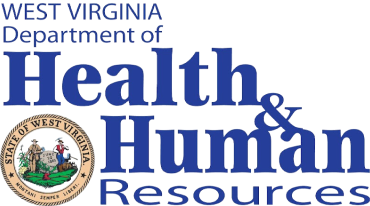Neonatal Abstinence Syndrome (NAS) significantly affects newborns exposed to addictive substances during pregnancy, leading to a host of medical complications post-birth.
Understanding NAS is a crucial step toward prevention and effective care.

NAS is a withdrawal syndrome that occurs after prenatal exposure to drugs is discontinued suddenly at birth.
NAS involves multiple systems in the infant’s body. Infants with NAS often require longer hospital stays to monitor and treat withdrawal symptoms such as tremors, feeding difficulties, excessive crying, and sensitivity to stimuli.
Pharmacological treatment such as small doses of morphine or methadone may be needed to manage withdrawal symptoms; the infant is then slowly weaned off under the supervision of a medical team.


The West Virginia Department of Health and Human Resources (DHHR) reported county-level Neonatal Abstinence Syndrome (NAS) data for 2017 showing the overall incidence rate of NAS was 50.6 cases per 1,000 live births (5.06%) for West Virginia residents.
The highest incidence rate of NAS was 106.6 cases per 1,000 live births (10.66%) in Lincoln County, followed by Marshall County, where the incidence rate was 102.1 cases per 1,000 live births (10.21%). Two counties (Pleasants and Pendleton) had no infants with NAS; all other counties had at least one documented case. As more years of data are collected, data will become available for all counties. The NAS data are posted online at www.dhhr.wv.gov/bph.
“West Virginia is one of a few states that collects NAS surveillance data and is serving as a model for other states across the nation,” said Dr. Rahul Gupta, State Health Officer and Commissioner of DHHR’s Bureau for Public Health.
“By releasing county data, we will be able to understand the impact of NAS at the local level and establish baseline data for program planning and management.”
The data, compiled by DHHR’s Bureau for Public Health, Office of Maternal Child and Family Health (OMFCH), with support from West Virginia University’s Department of Pediatrics Birth Score Office, provide insight into both state and county-level data for NAS for 27 counties. The remaining county-level data were suppressed because of the low occurrence of NAS and the need to protect the confidentiality of those infants and their families. This is the first time county-level data has been shared with local communities.
“West Virginia is in the midst of a child welfare crisis and the prevalence of NAS is at the forefront of our issues,” said Bill J. Crouch, DHHR Cabinet Secretary. “We have seen a 46% increase in the number of children we take into custody and 84% of all child protective service cases involve drug use. Children across our state have suffered more than anyone because of the drug epidemic and these NAS numbers quantify this tragedy.”
In response to this crisis, DHHR has implemented a number of strategies, including securing a first-of-its-kind approval for the treatment of NAS through Medicaid. In addition, under the direction of Governor Jim Justice, DHHR has worked with the West Virginia Legislature to secure funding for Drug-Free Moms and Babies, services for the families of children born with NAS, and prevention-based contraceptive strategies for men and women with substance use disorder.
The highest incidence rate of NAS was 106.6 cases per 1,000 live births (10.66%) in Lincoln County, followed by Marshall County, where the incidence rate was 102.1 cases per 1,000 live births (10.21%). Two counties (Pleasants and Pendleton) had no infants with NAS; all other counties had at least one documented case. As more years of data are collected, data will become available for all counties. The NAS data are posted online at www.dhhr.wv.gov/bph.
“West Virginia is one of a few states that collects NAS surveillance data and is serving as a model for other states across the nation,” said Dr. Rahul Gupta, State Health Officer and Commissioner of DHHR’s Bureau for Public Health.
“By releasing county data, we will be able to understand the impact of NAS at the local level and establish baseline data for program planning and management.”
In the dynamic world of addiction recovery, continuous learning can become your strongest ally. Our goal is to keep you informed and confident in this journey. From the latest research findings to inspiring success stories, this section is continuously updated with articles and content that matter.
Together, let’s stay tuned and keep learning on our journey towards a life free from addiction.












Privacy Policy | © 2023 All Rights Reserved.
